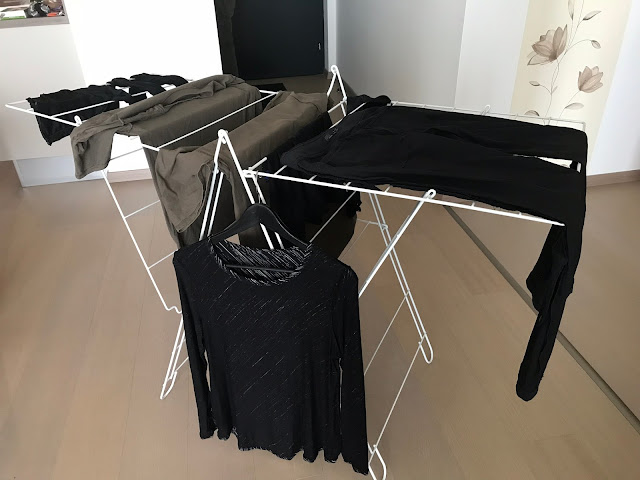There's a Bloodsucker Born Every Minute
CHAPTER 10: IN WHICH A MYTH-TERY IS SOLVED
Balkans & Beyond, Days 17 & 18: Sighișoara, Romania to Brașov, Romania. No doubt our luck will run out soon, but Wednesday dawned another sunny day as we departed Sighișoara on our old friend Highway E-60. We hadn't gone far when we again saw roadside fields with what looked like rows of telephone poles askew.
Unlike yesterday, this time we were able to get a closer look and noticed that wire cabling connected to the poles formed an extensive trellis system. Stopping, we discovered that we had encountered a field where hops are grown, a "hop yard," in the proper terminology. A climbing plant, hops are trained to grow up the wires and cover the trellises. Though not a significant factor in the national economy, much of Romania's hops crop is exported, primarily to Russia.
Spring planting season seems to be in full swing in the Transylvanian countryside. In fields along the highways, we often see people seeding fields by hand. Where the soil is turned up, it appears dark and fertile. Vibrant green crops and grasses attest to its richness.
 |
| Rupea Citadel (photo from Wikipedia) |
By the late 1700s, the citadel had been abandoned after its roof was destroyed in a severe storm. For two hundred years, it sat in ruins until a comprehensive preservation project between 2010 and 2013 restored the fort to its former glory.
Always willing to climb for a panoramic view, we hiked to the top of the citadel for an overlook of the nearby town of Rupea (pop. 5,011). As in other towns and villages we've driven through in this area, houses are concentrated within the town, and a distinctive demarcation divides the town from the surrounding countryside.
As we passed through the town, we stopped at the local Profi supermarket for a few supplies, hoping we'd pass a roadside park where we could enjoy a picnic lunch. Though that never happened, we did locate an unpaved road in a wooded area where we stopped and ate, hoping we weren't encroaching on someone's private property.
 |
| Our rural lunchtime layover |
 |
| Our Airbnb apartment in a new building, a bargain at $53 per night |
 |
| Drying rack from our Bratislava Airbnb. The current apartment doesn't have one. |
 |
| Exhibits included lots of text materials, most in Romanian only. |
 |
| Council Square (Old Town Hall dominant) |
As in all the cities we've visited on this trip—and on other trips to Europe—the sidewalk cafe culture is alive and well. Numerous cafes offered al fresco dining on the square, their table and chair styles all that distinguished where one ended and another began. For some reason, all seemed to be offering pizza, and we made our pick and placed an order. Unfortunately, we did not choose well, and our pizza, though covered with seasoning, was completely flavorless.
On Thursday, we had a different kind of tasteless experience. Even though neither of us is a fan of the Dracula story or the recent surge of vampire literature, we planned to visit Bran Castle in the nearby city of Bran because we knew it had no actual connection to the famous literary character.
 |
| Bran Castle |
In fact, the town of Bran is permeated with a circus-like atmosphere with dozens of vendors hawking cheap souvenirs to the tourist hordes. Even though this kind of zoo usually sends us running in the opposite direction, we wanted to search for a couple of 2013 letterboxes hidden at the castle. It came as no surprise when our search revealed that neither box was in its hiding space.
 |
| Queen Mary's bedroom |
In accordance with the queen's will, her body was buried with her husband's in Bucharest. Her heart was placed in a case in a niche dug into the side of a hill across the river from Bran Castle.
Tomorrow we'll continue our drive to Bucharest, where we'll turn in our rental car and spend the next four days exploring the city before winding up our time in Romania.
WEDNESDAY, 11 APRIL & THURSDAY, 12 APRIL, 2018
• Started in: Sighișoara, Romania
• Ended in: Brașov, Romania
• Miles driven: 115
• Miles walked: 11.41
• Weather: 48° to 75°, sunny
• Vampires who have lived in Bran Castle: 0
• Dracula fans who believe he lived in Bran Castle: 44,278,120
• Hop yards we've visited: 1
• Merchants selling exactly the same souvenirs near Bran Castle: 22
• Selfies taken at Bran Castle between 11 a.m. & 1 p.m. today: 693

Loved: Seeing hundreds of sheep being tended by dozens of shepherds as we drove along the backroads. Often the shepherd was using his mobile phone when we passed.
Lacking: Dracula fans' willingness to accept historical facts that: a) the character of Dracula was not based on a real Romanian count; and b) a fictional character did not live in a real castle.
Learned: We had no idea that hops were grown on wire trellises in a hop yard. We always thought they were delivered to breweries by the Yeaster Bunny. (OK, I did. Ken probably did not.)
More Photos from Today
 |
| Funny mat at the apartment across the hall |
 |
| Stunning Court of Appeals courthouse in Brasov |
 |
| Embroidered items were popular souvenir fare. Made in Romania or in China? We didn't investigate. |
 |
| Rope Street in Brasov, used by fire fighters in the Middle Ages, only about four feet wide. |
 |
| Translations: Car Wash (L) | Grocery Store (R) |
 |
| Oh, so affordable fresh bread: 39 cents US for the baguette, 23 cents for pretzels bigger than your hand |
 |
| You never know what kind of traffic you'll encounter on Romanian roads. |















